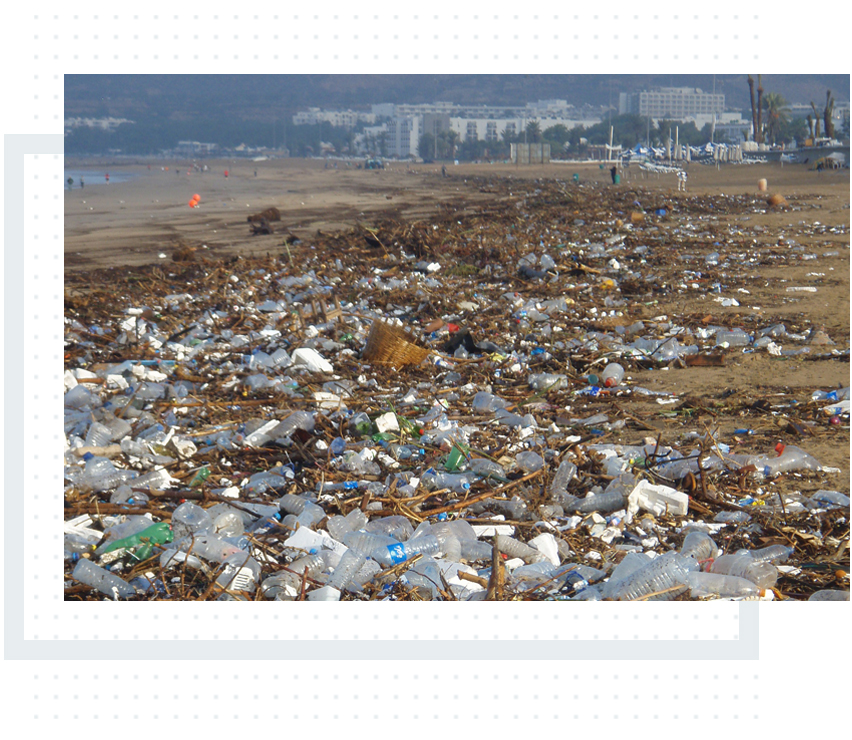Marine Litter & Plastics Pollution

From the 1960’s through to the 1990s oil pollution and the major oil spills were the high profile scourge of the marine environment.
Perversely these were instrumental in driving the development of the marine conservation efforts. Marine litter by comparison had a very low profile but was beginning to be recognised by the 1980s by people like Trevor Dixon. The increasing level of plastic pollution often associated with other threats like sewage pollution became a major issue in the 1990s. The growing scale and impact of ongoing plastic pollution to the environment, wildlife and human health has now been recognised.
Working with Professor Allan Williams in 1994 Bob set up the first of a series of annual national meetings on marine litter. Further meetings lead to the formation of the National Aquatic Litter Group (NALG) which continued to function until the early 2000s. The focus of these meetings included:
- Understanding the overall distribution of marine litter and its sources, from riverine, coastal and oceanic inputs
- Developing consistent methodologies for recording seashore marine litter pollution between different organisations
- Classifications of the different types of pollution for example sewage related debris, in order to target sources of pollution at source
- The start of campaigns to reduce specific types of pollution
Bob played an active part in all of these areas publishing a number of scientific papers as well as the proceedings of the NALG annual meetings.
He led two major contracts with the Maritime and Coastguard Agency the first to look at indicators of oil waste and garbage disposal by shipping (1999 Research project 426) and a follow-up project to look at a methodology for assessing shipping related litter which incorporated a photographic guide to 60+ items clearly related to shipping (2000 RP470).
For more details contact Bob
bob@bobearll.co.uk
Image: Steve Lockwood

From the 1960’s through to the 1990s oil pollution and the major oil spills were the high profile scourge of the marine environment.
Perversely these were instrumental in driving the development of the marine conservation efforts. Marine litter by comparison had a very low profile but was beginning to be recognised by the 1980s by people like Trevor Dixon. The increasing level of plastic pollution often associated with other threats like sewage pollution became a major issue in the 1990s. The growing scale and impact of ongoing plastic pollution to the environment, wildlife and human health has now been recognised.
Working with Professor Allan Williams in 1994 Bob set up the first of a series of annual national meetings on marine litter. Further meetings lead to the formation of the National Aquatic Litter Group (NALG) which continued to function until the early 2000s. The focus of these meetings included:
- Understanding the overall distribution of marine litter and its sources, from riverine, coastal and oceanic inputs
- Developing consistent methodologies for recording seashore marine litter pollution between different organisations
- Classifications of the different types of pollution for example sewage related debris, in order to target sources of pollution at source
- The start of campaigns to reduce specific types of pollution
Bob played an active part in all of these areas publishing a number of scientific papers as well as the proceedings of the NALG annual meetings.
He led two major contracts with the Maritime and Coastguard Agency the first to look at indicators of oil waste and garbage disposal by shipping (1999 Research project 426) and a follow-up project to look at a methodology for assessing shipping related litter which incorporated a photographic guide to 60+ items clearly related to shipping (2000 RP470).
For more details contact Bob
bob@bobearll.co.uk
Image: Steve Lockwood